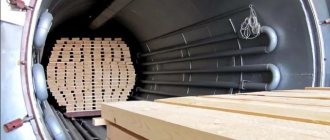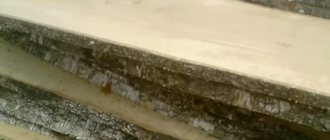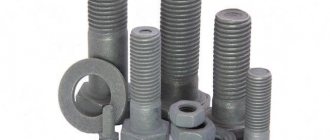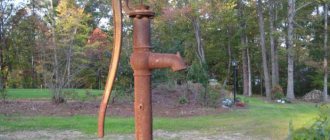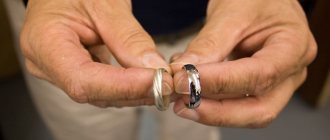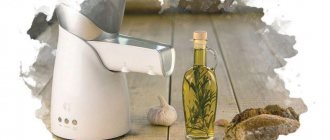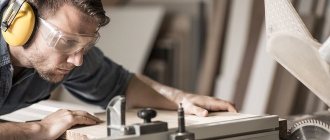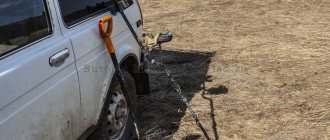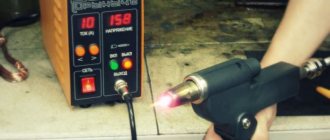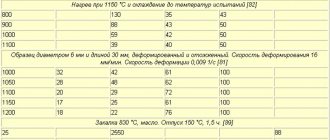Wood in the form of finished lumber, plywood products and particle boards continues to be the basic consumable raw material for many areas of industry and construction. Its environmental friendliness and flexibility in processing allow it to compete even with high-tech fiberglass. At the same time, there are also disadvantages of the material due to low strength and sensitivity to aggressive environments. Special pre-treatment methods allow them to be minimized. In particular, chamber drying of wood with heat is one of the most common ways to increase its technical and physical properties.
Equipment used
There are different types of drying units, the general fundamental design of which provides for the presence of coolants. From them, hot flows are distributed over the surface of the target material. The basic classification distinguishes between dielectric and convective drying chambers. Dielectric models generate thermal energy in the process of converting high-frequency currents.
In turn, convective units force heat flows to the lumber through preheated air, which helps remove moisture. The drying agent in this operating scheme is heated together with water vapor. After which the mixture circulates in the heat exchanger. A convective chamber for drying wood can use fire tube, steam-water, and induction media as functional elements (heat conductors). Sometimes gas chambers are used, which release large volumes of thermal energy. Both dielectric and convective dryer models can operate in a vacuum, that is, at low pressure.
Preparation of material
The quality of drying largely depends on how correctly the stacks were prepared - the so-called packages of lumber, which are specially formed to be placed in the chamber. For example, uneven drying and deformation of individual areas on the boards will be the result of improper packaging.
There are usually two methods of this kind of preparation:
- single stack;
- batch formation of bookmarks.
In the first case, one stack includes several boards folded in the same configuration. Batch stacking assumes that the lumber will be stacked in several ready-made stacks. A rigid platform with a flat surface is used as the basis for the stack. It can be a rail trolley formed by separate tracks.
In order for chamber drying of wood to be carried out without leakage of the thermal agent, underloading of the stack is not allowed. It must be completely filled either with boards of the same length, or with lumber of different sizes staggered. One or more layers of lining are provided between the boards being joined.
For what purposes is it suitable?
For the construction of a wooden house, chamber-drying timber is considered preferable, since it practically does not create shrinkage and is less susceptible to warping than untreated timber.
These characteristics save time, since it is possible to begin finishing the premises immediately after installation.
Territory of use of chamber timber in house construction:
- house building frame;
- external walls with load-bearing characteristics;
- columns and other supporting elements;
- roofing system;
- interfloor covering;
- interfloor stairs.
Additionally . Chamber timber is often used as interior and exterior home decor. It is used in finishing, so it must be grade 1. In order to preserve the presentation of the product, it is transported in a protective film and closed trucks or other transport cargo equipment.
Modes
There are three categories of drying:
- The first category is a high-quality mode, carried out at a temperature of about +60+70°C. This mode allows you to dry the material to a humidity coefficient of 6-8%. The products obtained by this processing method are distinguished by high technical and operational indicators, allowing the material to be used in instrument and mechanical engineering, in power building structures, in the production of engineering equipment elements, etc.
- The second category provides a regime that brings the humidity level to 8-10%. For such purposes, drying chambers operating at temperatures up to +75°C are used. The target area for using materials processed in this mode is furniture production, as well as the production of joinery and building structures.
- The third category of drying allows you to obtain lumber of average quality, the humidity of which can reach 15%. Such wood is subsequently used to produce containers, moldings and inexpensive building materials.
Production and types of condensation drying chambers
Highly efficient condensation drying chambers are produced by Italian and Finnish companies, as well as the domestic production enterprise Izhevsk Heating Unit Plant.
In European countries, condensation drying of wood has received well-deserved recognition due to its high environmental friendliness and the absence of harmful emissions into the atmosphere. In our country, condensation drying chambers appeared about 20 years ago under the brand of a Finnish manufacturer. However, the high cost of equipment and insufficient information about its advantages prevented the spread of wood condensation drying technology in Russia. At the same time, it should be noted that those enterprises that used the condensation drying method expressed only positive feedback.
A revolution in the consciousness of representatives of the domestic woodworking industry was caused by the appearance of a Russian analogue of the European condensation unit. The condensation wood drying unit of the Izhevsk Heating Unit Plant, developed in 2000, fully complied with domestic operating conditions and the financial capabilities of the Russian consumer. Developed by an experienced manufacturer, the condensation drying chamber is several times cheaper than European equipment and successfully competes with convection analogues.
Positive feedback from domestic woodworking enterprises indicates the effective development of condensation wood drying technology in our country. The duration of drying pine 50 mm thick in winter with a humidity level of 60% to a state of 7% humidity is 14 days in a condensation chamber.
The design of the condensation drying chamber is based on the following elements:
- ventilation unit,
- cabinet with power electrical equipment,
- management and control system,
- freon cooling system,
- drying chamber enclosures (prefabricated frame and thermal insulation panels),
- lift-and-slide or swing gates with a lifting mechanism.
It is also possible to use a combined wood drying technology if the enterprise has a source of thermal energy. This combination allows you to reduce the cost of preheating in the chamber.
Dear visitors, you can order an estimate or buy a drying chamber by calling:
+7
or by email
Warming up the wood
Primary heating is required to prevent stress on the internal structure of the lumber during the main drying. An intense but short-term thermal effect is produced, during which the moisture does not evaporate. In parallel with the heat treatment, saturated steam is sent into the chamber. This function is performed by a group of fans with heaters. The process of evaporation of moisture throughout the entire thickness of the material will begin only after the cessation of thermal exposure.
Again, so that chamber drying of wood does not damage its structure, already at the first stage of heating, the balance between the temperature regime and the rate of humidity drop is regulated. If this balance is disturbed, there is a risk of cracks. The duration of this procedure is determined by the external conditions and characteristics of the wood - on average from 1 to 2 hours.
Main stage
After the initial warm-up, drying immediately follows. But the transition must be gradual, which is reflected in the slow opening of the air exchange dampers that remove moisture. At the same interval, the optimal parameters of heat flows are established. The temperature regime, in turn, is regulated by the opening level of the chamber blinds. If it is necessary to increase the saturation of the agent, the inlet pipes are completely closed.
Also, the degree of saturation of the thermal effect can be adjusted by starting the steam generator. However, steam injection systems cannot be connected when the hood is open. During the operation, chamber drying of wood is controlled by temperature characteristics and its error. In production, information about these values is usually entered into a log every hour.
Moisture and heat treatment
This is also a kind of intermediate stage, for which special environmental conditions are created: it must provide a high intensity of moisture removal and a stable temperature regime. Such an environment is created through the same steam injection with the heaters turned on. Fans and exhaust ducts can be used in regulation. The optimal temperature for this processing mode should be 6-7°C higher than the environment at the main drying stage, but at the same time be below +100°C.
It is important to emphasize that moisture-thermal treatment is not applied to all wood species. For example, technologies for the production of dry timber provide for the use of this operation for lumber from cedar, pine, linden, the thickness of which exceeds 60 mm. Thick workpieces can be subjected to moisture-heat treatment several times to completely cover the internal structure.
What is the limitation on the length of wooden beams and rafters?
For wood, a length of 30 meters is unattainable even theoretically: standard lumber on the market is no longer than 6.5 meters according to GOST 24454-80. Therefore, the maximum span that can be covered with a solid beam made of coniferous and deciduous wood cannot be greater than this value.
Any supporting structure, beams or rafters, experiences certain loads and impacts during operation. The forces acting on a member increase with the length of the structure or span. For the safe use and operation of load-bearing elements and the structure as a whole, it is necessary to use the highest quality and durable wood.
Ending the process
After drying, conditioning treatment is carried out, the purpose of which is to equalize the moisture content and structure of the material. By means of humidifying devices and heaters, a special environment is formed in which overdried areas of lumber are moistened, and insufficiently dried areas dry out. In terms of time, such processing lasts several hours - the specific duration depends on the volume of the bookmark and the parameters of the material.
The moisture content of wood after chamber drying with conditioning treatment also varies from 6 to 15% depending on the mode used. Next, after pre-cooling, the stacks are unloaded from the chamber. If necessary, an additional forced cooling operation with ventilation can be used.
What does the concept mean?
The term refers to wood material of regular geometric shape, planed on all sides to an even state. The main difference between this raw material and traditional chamber-drying timber is that it is not placed in a special oven for forced drying. The material is stored by the manufacturer after production, so the humidity remains at a high level.
Then sorting occurs by size and section. If the boards are subsequently subjected to profiling, they are sent to a special workshop.
The peculiarity of timber with natural moisture is that due to its low dryness, it will be more accessible than chamber-dried raw materials.
Varieties and types
There are several types of natural moisture timber, depending on the material of manufacture:
- spruce;
- pine;
- larch.
The texture of the material is uniform if it is made of spruce. This tree has a good pleasant smell, so while living in a house built from spruce beams, the aroma of a Christmas tree will be present.
it is resistant to ultraviolet radiation, water and temperature changes.
Pine raw materials are also used for building houses, but it has its own nuances. This is the easiest to process and the most popular material, and also the most affordable. Despite the fact that timber is looser compared to other species, it is the most affordable among all.
The profiled one is different in that after planing it is equipped with a tongue-and-groove system. This system allows you to build a house from timber without the formation of cold bridges.
Due to the fact that each beam fits into the other due to grooves, the structure is sealed.
Separately, glued laminated timber can be distinguished. It is distinguished by the fact that it is manufactured using a technology where all the wood, after sorting, is glued together using a special composition. Only then is the material processed on machines.
Pros of technology
Chambers with temperature and humidity treatment allow drying processes to be carried out while fully preserving the environmental friendliness of the material. In most cases, such processing methods do not require the use of active chemicals that increase the efficiency of the process. The high quality of the result is also noted. If the operator did not make mistakes when organizing the process, the resulting timber will acquire high strength and protective qualities.
Many people also point to the high productivity of chamber drying of wood. The pros and cons, however, agree on this characteristic. On the one hand, batch processing does allow large volumes of wood to be serviced in short time intervals. On the other hand, the inability to process small packages with a reduced load limits the scope of application of such equipment.
Advantages and disadvantages of dry profiled timber
Comparative analysis of the main parameters of dry timber
Pros:
- environmental friendliness;
- preservation of the specified geometry (there is no “torsion” of the wood);
- absence of harmful microorganisms and fungi. Long-term exposure to elevated temperatures has this effect on wood;
- integrity of solid wood;
- light weight due to reduced moisture levels. Allows you to reduce the load on the foundation;
- preservation of micropores, which allows the wood to breathe and provide natural air exchange in the room;
- aesthetic appearance;
- resistance to temperature changes;
- minimal shrinkage of the house (no more than 5% for the entire period and no more than 3% for the first year of operation);
- high installation speed;
- high thermal insulation properties due to the tight connection of the beams to each other.
Minuses:
- it is difficult to ensure uniform drying of wood;
- the cost of dry profiled timber is 25-30% higher than naturally dried timber;
- there is a possibility of uneven drying of large cross-section timber.
Chamber drying allows you to obtain higher quality lumber and, accordingly, ensure its good processing later.
Disadvantages of technology
The main criticism of this drying technology comes down to the risk of the formation of numerous defects in lumber during the operation. One of the most common of these is warping. Violation of technology can provoke both longitudinal and transverse deformations.
Typically, such processes are the result of insufficient moisture removal before the main drying stage. Often the material develops defects in the form of cracking at the ends. Similar defects arise if the lumber dryer operated in the configured mode during the initial warm-up stage. The technology requires that this process, even at minimum temperatures, be carried out under conditions of softening the structure of the lumber.
Areas of application
Mini-timber is a new material that has created worthy competition for standard timber. The areas of use of this material cover a large number of areas in suburban low-rise construction.
This product is an ideal option for people who want to quickly and inexpensively build wooden housing. The product is used for the following purposes:
- construction of temporary wooden buildings in the form of summer guest houses;
- assembly of permanent structures for seasonal residence;
- construction of houses for permanent residence;
- reconstruction of housing, for example, completion of a terrace, veranda, canopy;
- improvement of personal plots, construction of baths, gazebos.
